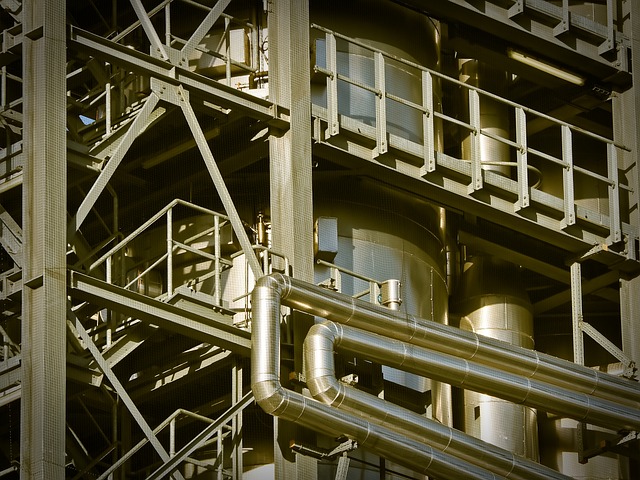Rebar shop drawings are critical for achieving seismic resistance in building design, ensuring structural integrity by specifying precise reinforcing steel placement, connection details, and material strengths, thereby enhancing safety during earthquakes. Meticulous detailing has proven to minimize damage in seismically active regions, underscoring the vital role of these drawings in protecting lives and property.
In regions prone to seismic activity, ensuring structural stability is paramount. This article explores the critical role of seismic-resistant rebar detailing in enhancing building resilience. We delve into the concepts behind understanding seismic resistance and the significance of precise rebar shop drawings in achieving robust structural designs. Through examining real-world case studies, we highlight successful implementations that underscore the importance of detailed rebar planning for optimal safety and stability.
Understanding Seismic Resistance in Structural Design
Seismic resistance is a critical aspect of structural design, particularly in regions prone to earthquakes. It refers to a building’s ability to withstand and resist seismic forces, ensuring stability and minimizing damage during such events. Understanding this concept is paramount in achieving enhanced structural integrity, especially when incorporating essential elements like rebar.
Rebar shop drawings play a pivotal role in achieving seismic resistance. These detailed drawings provide precise specifications for reinforcing steel placement, allowing engineers and construction teams to create robust structures. By carefully considering factors such as material strength, bar sizes, spacing, and connection details, rebar shop drawings ensure that the final construction meets or exceeds seismic safety standards, contributing significantly to the overall stability of buildings designed to withstand potential ground motion.
Role of Rebar Shop Drawings in Strengthening Structures
Rebar shop drawings play a pivotal role in enhancing structural stability, particularly in seismic-resistant designs. These detailed blueprints provide critical guidance for fabricators and construction teams, ensuring that each rebar is precisely cut, bent, and placed to meet specific load requirements. By incorporating rebar shop drawings, architects and engineers can navigate complex structural challenges, especially in regions prone to seismic activity.
The accuracy and meticulousness of these drawings are vital. They allow for the creation of custom-made reinforcement bars that perfectly fit into a structure’s framework, maximizing their strength-to-weight ratio. This level of customization ensures that the building can withstand not only the weight it bears but also the unexpected forces generated during earthquakes or other natural disasters, thereby fortifying its overall stability and safety.
Techniques for Detailing Rebar for Optimal Stability
In achieving optimal structural stability, meticulous detailing in rebar shop drawings is paramount. Engineers and architects must incorporate a range of techniques to ensure robust connections between rebar elements. One crucial method involves designing lap joints that allow for seamless integration, enhancing overall strength and preventing failure points. Additionally, proper end treatments, such as swaging or bending, create secure anchorage points, further strengthening the structure against seismic forces.
Precisely detailed rebar shop drawings also facilitate efficient installation on-site. Clear specifications and dimensions ensure accurate cutting and placement, minimizing errors. Incorporating reinforcement bars with specific diameters and yields ensures structural integrity throughout construction. These techniques collectively contribute to a building’s resilience against seismic activities, making them essential for projects in seismically active regions.
Case Studies: Successful Implementation and Enhanced Safety
In recent years, the successful implementation of seismic-resistant rebar detailing has been highlighted through numerous case studies, demonstrating enhanced structural stability and safety. These real-world examples showcase how meticulous rebar shop drawings, coupled with advanced manufacturing techniques, can fortify buildings against the devastating effects of earthquakes.
One notable case involves a retrofitted high-rise structure in an active seismic zone. By incorporating tailored rebar designs and utilizing specialized steels, engineers achieved significant improvements in the building’s overall resilience. The results were remarkable, with the structure sustaining minimal damage during a subsequent earthquake, underscoring the pivotal role of seismic-resistant rebar detailing in safeguarding lives and property.
Seismic-resistant construction is no longer an option, but a necessity. By implementing detailed rebar shop drawings, architects and engineers can significantly enhance structural stability during seismic events. The techniques discussed in this article offer practical solutions for ensuring safety and resilience in buildings across various regions prone to earthquakes. Rebar shop drawings play a pivotal role in achieving these goals, allowing for precise rebar placement and optimizing the transfer of forces, ultimately strengthening the overall integrity of structures.
